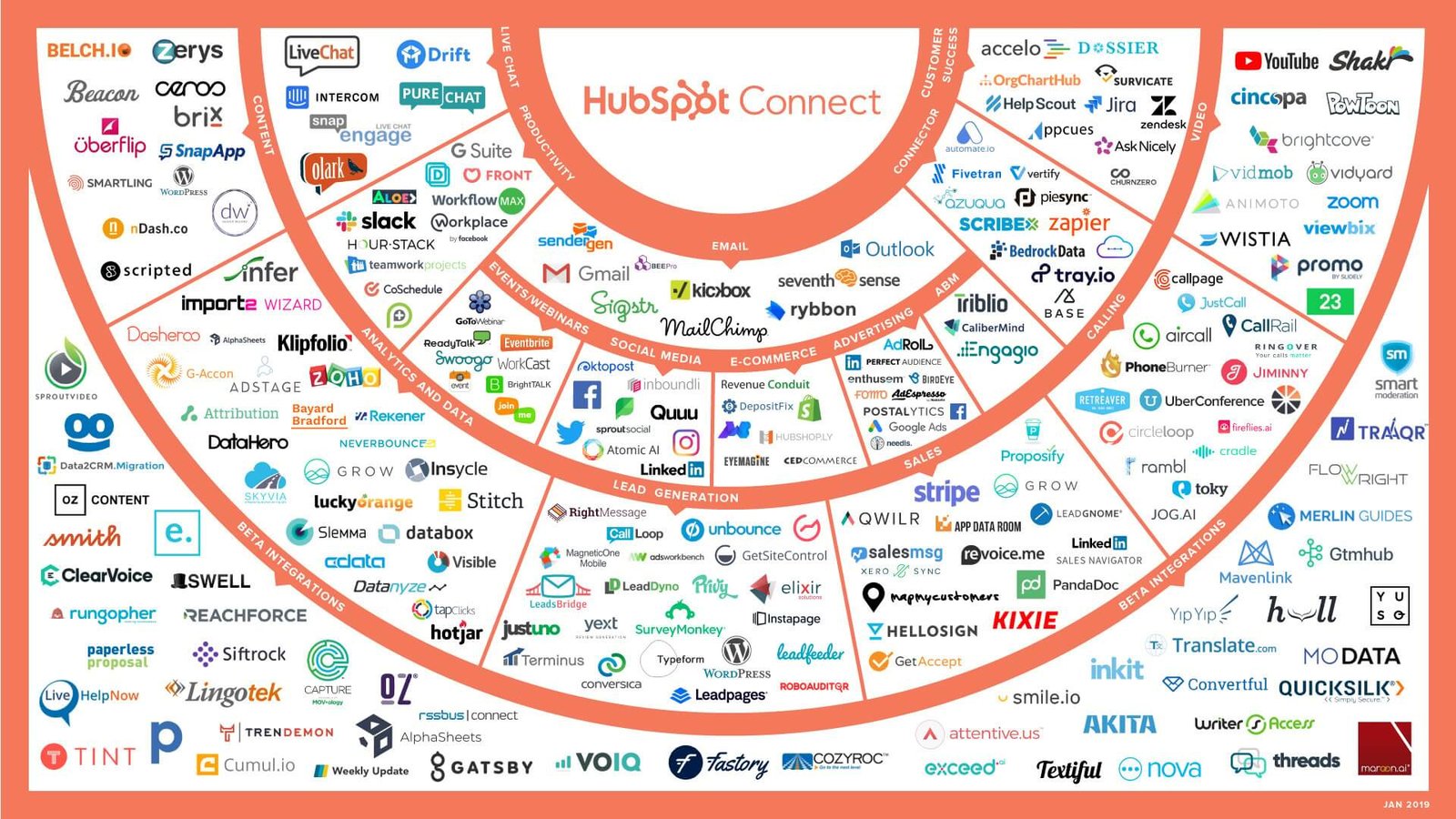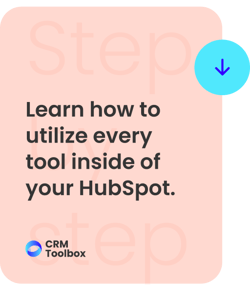Subscribe to ur Blog

Challenges of Integrating Your Tech Stack to a CRM & How to Solve Them
Ranya Barakat
Having a varied tech stack can help you optimize several processes, automate others, and allow your general operation to be much more efficient. However, when the integration between different platforms is far from optimal, most of the tech stack goes to waste.
Think of it like this: Even when you have the strongest rowers in a competition, your team needs coordination, direction, and constant rhythm to have a chance at first place. The same goes for technology. It doesn't matter if you have the most powerful tool. If they are disconnected or poorly synchronized, the results will always be suboptimal.
When the tools of your tech stack are not well integrated, friction will begin to appear in your teams, since the inconsistency of the data is questioned, creating inefficient processes that have a direct impact on the final customer experience.
But, What is a Tech Stack?
Before we start, it is important to explain what a Tech Stack is and what we are referring to when we mention it. It is the inventory of the technology and applications that a company has to make its operation more efficient. This includes common things, like the email service they use, and the CRM tool they use to store the information of each of their contacts, but it can also include custom applications or technologies of different kinds.
The rapid appearance of new technologies makes keeping a Tech Stack up to date almost impossible, as there will always be new tools on the market. However, leaving aside what you cannot obtain, your desired success relies on making the most of what you have. Step one is to have each platform or tool communicate with one another to create a "technological brain" where synapses flow without any obstacles in their way.
1. Not Having a Central Source of Data
Although the idea of integration implies that information can flow freely between different systems, it is crucial to remember that every integral system has an origin. In this case, using the CRM as the data source is a good option because that is where more information about your customers and prospects is stored. When there are doubts about the consistency of your information, you can always go back to your data source.
For example, a CRM like HubSpot can fulfill the function of being the data source and, thanks to its countless integrations, have effective updating processes that guarantee the integrity of all your data.
Not having a source of origin will create conflicts driving you away from your goal. Look for a CRM that can fulfill this role, one with the necessary integrations to ensure that your systems speak effectively.
2. Imagining That It Is A One-Time Thing
Believing that integrating your tech stack is a one-time job is honestly wishful thinking. Underestimating the time an integration takes is part of the problem, but it is worsened by thinking that no matter the complexity, it will have to be done once.
The reality is that data is a living entity that is constantly evolving just like your Tech Stack. Since they are always growing, integration efforts never end. Bear in mind that the better this process is done the first time, the simpler it will be in the future.
3. Lack of Definition and Alignment
Regardless of how clean your data integration is, nothing has true value if the rules and requirements are not defined beforehand. As with any other important project of your company, it is key for these points to be clear before the integration begins. Too much ambiguity and openness can lead to the need to rework the integration, delays, or a significant increase in project costs.
To avoid this, it is important not to leave anything up to interpretation and that the integration-related goals made by each area of your team are clear. You will also need the boss’s or leader’s approval to maintain clarity and alignment.
Once your objectives are well defined, a results matrix can be a useful tool, as it will give stakeholders visibility of the integration and guarantee that each area's needs will be covered.
4. Not Considering The User’s Needs
When you do not have the end user at the center of your integration project, it becomes destined for failure immediately. A good integration project begins with asking what this project solves for the user and why. Being transparent about the user who interacts with you, encourages an integration designed especially for your use cases.
In the end, this approach will have your end users feel like the tool is at their service and not the other way around, giving your business a greater chance of success in the short and medium term.
5. Forgetting to Completely Document the Process
Do you want peace of mind knowing your tech stack is not going to get out of control? Make sure you have detailed documentation for every integration you have, including a map of how the data moves between different platforms, the fields/objects involved, and a knowledge base so that your team can self-manage their doubts.
Doing this may seem like extra work during the integration process. However, it will become the ultimate guide when you make adjustments to the platforms or fix a bug.
Documentation should be done for two main internal customers: developers and end users. For developers, it is necessary to take note of each code, each connection, each flow, and each configuration. For end users, you need a knowledge base where common errors and practical solutions are identified.
6. Too Much Technology
Is there such a thing as an excess of tools? The answer is yes and companies prefer having more technology because they think it will help them succeed. However, having several tools is not necessarily synonymous with a well-nourished tech stack; you can have several tools that perform similar functions. With that, the only contribution made to your company would be extra information and higher chances of integration errors or duplicate data.
If you suffer from FOMO (Fear Of Missing Out) every time you hear of a new app release, really think about whether you need it for your business and what features it can solve that some other tool you already have doesn't currently include. If you decide that it is necessary, try removing another tool before integrating the new one, to keep your tech stack as efficient and controlled as possible.
7. Changes on The Fly
If you saw Spider-Man: No Way Home, you must know that making last-minute changes to a project can be disastrous. If you didn’t, you know now. Although you won’t open the door to another universe, it can still be very tempting to make adjustments to the integration project while it is a work in process and that never has good results. There will always be new technology or ideas on the table, but it is important that with a project that touches something as sensitive as your database, you are careful and keep everyone aligned with the original plan. If there are changes or adjustments, it is best to implement them during the second stage.
Making changes to a project already in motion can result in a loss of focus and significantly increase the cost of the project, making the integration less profitable and less successful.
8. Omitting Testing
Before it can be finalized, one of the key stages of integration is testing the systems and ensuring that everything is working as originally planned. Before releasing it to the client, it must be documented that each connection is correct. An error detected early on can save you time, money, and friction with your customers, and testing allows for future success.
9. Not Knowing When to Ask for Help
More due to humanity than an integration problem, not seeking advice or help is one of the most complicated challenges you can face. It seems that everything is designed so your integration is as simple as possible, but when you start to connect the dots, communication errors and problems can arise, as well as failures in automation and data recording. While it can be very tempting to leave integration to an internal team, sometimes not asking for help early on can be more costly than doing it in the first place; If you take into account the lost time and the possible frustrations that your team will come across, going to a specialized agency could be a better alternative from the beginning. They will provide you with their knowledge and experience to boost your business without wasting valuable time.
Ideally, you should look for an agency specialized in the tool that will be the guiding axis of your integration strategy, usually the CRM platform.
I'm Here For You
If you're considering using HubSpot or are already using it, I'd love to talk with you about the main challenges you're facing, and together we can find a solution to address them.
Related Reads
Master HubSpot tools & unleash a world of endless possibilities!
Unlock Your HubSpot Powerhouse: Contact Us to Transform Your Digital Journey!

Ranya Barakat
Ranya is a serial entrepreneur with over 8 years of experience working on the HubSpot CRM. She loves pushing her sleeves up , and getting s*** done. When she is not running her HubSpot partner agency, you can find her upside down on her yoga mat.
Subscribe to our blog
The best information about inbound marketing, sales, guides and migrations.



